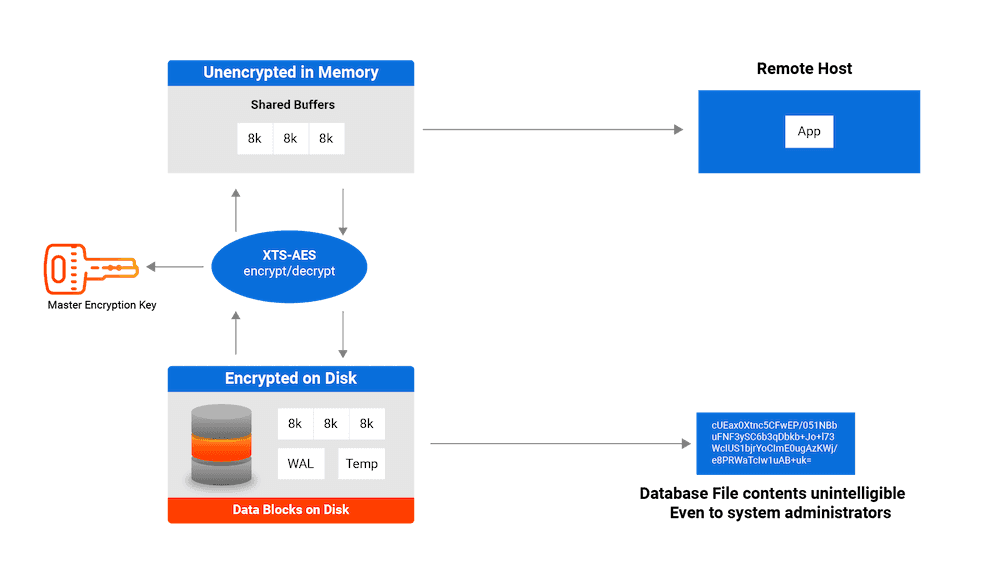Transparent Data Encryption
Transparent data encryption (TDE) is an optional feature supported by EDB Postgres Advanced Server and EDB Postgres Extended Server from version 15.
It encrypts any user data stored in the database system. This encryption is transparent to the user. User data includes the actual data stored in tables and other objects as well as system catalog data such as the names of objects.

How does TDE affect performance?
The performance impact of TDE is low. For details, see the Transparent Data Encryption Impacts on EDB Postgres Advanced Server 15 blog.